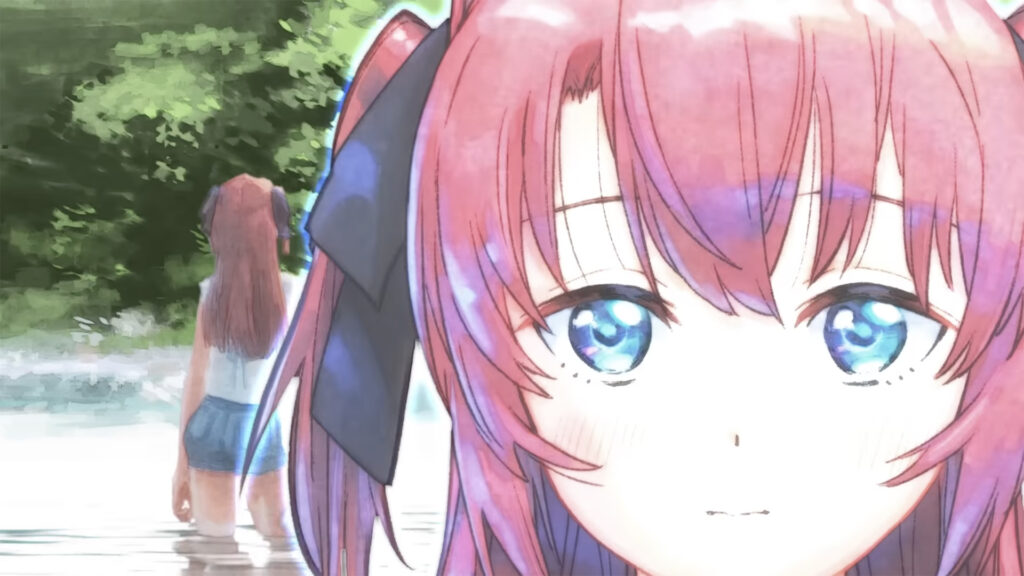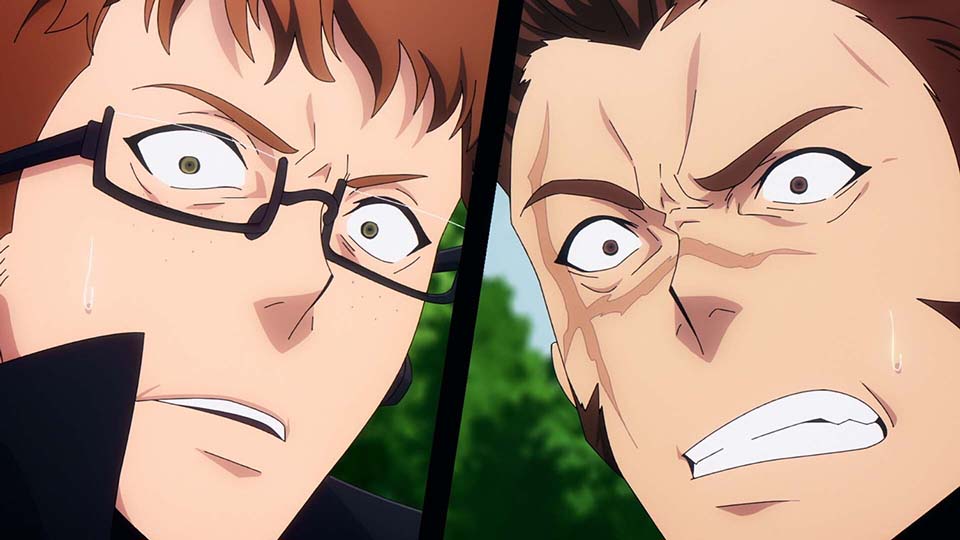There are few anime with more international recognition than Naruto , and its unforgettable score has played a major part in that fame. With music by composer Toshio Masuda and a host of fantastic opening themes, it left you humming its tunes long after Naruto went off to train with Jiraiya. And now, fans of both the show and live symphony can enjoy Naruto ’s music thanks to Naruto: The Symphonic Experience . Currently touring around the United States, it’s being conducted by the talented Emily Marshall. Emily took the time to participate in an interview with Crunchyroll where she told us about how she fell in love with the music of the series, what goes into making a symphonic tour run, and what audiences can expect from such a fan-focused event. Thank you, Emily, for taking part in this interview. Can you tell us a little bit about yourself and your work as a conductor and musician? Emily Marshall : Thanks so much for having me! I’m having a blast currently on the tour as the Music Director and Conductor of Naruto: The Symphonic Experience . I am based on the east coast, but I spend a good deal of the year traveling for different gigs all over the country and the world. I began my music directing career in musical theatre, working in the New York Broadway scene. I was the Music Director and Vocal Arranger of the musical Be More Chill on Broadway and most recently was the Associate Music Director of Alanis Morisette’s Jagged Little Pill . I also subbed on many other Broadway shows including Beautiful , Head Over Heels , Mean Girls , School of Rock and MDed workshops, readings and developments. When I was working in theater, the majority of the gigs were conducting from the piano — meaning I would give cues to the singers and the band with my head and hands while I was playing keyboard at the same time. In 2022, I got offered the position of Associate Conductor and Keyboardist for the legendary rock band The Who (what a crazy call!). I went on tour with them that year and that was really my first professional gig stick conducting. In each city we would pick up a 33 piece orchestra and I would conduct and lead us through one rehearsal the day of the show, then I would play keyboard with the band for the shows at night. It was an awesome gig and also reminded me how much I loved touring. The following year I began working in the live-to-picture space and from there, I have been the Music Director and Conductor of numerous tours that have involved a live orchestra accompanying a film. It’s such a cool genre and I love how it has been able to mesh so many of my skills and interests. Are you an anime fan? If so, what is it that got you into anime? Did music have anything to do with it? Marshall : I can’t say I really knew too terribly much about the world of anime before I began working with these live-to-picture shows, but I have to say that I’m really loving learning all about it! The music that is written for shows like Naruto is really incredible and adds so much to the series. And I love the pop-punk style that Naruto really leans into. I grew up with pop-punk, listening to bands like Blink 182, Yellowcard, Something Corporate and so many more. I hear so many of these stylistic influences in the Naruto score with the driving basslines, guitar riffs and intricate drum patterns and fills. RELATED: Meet the Cast of Attack on Titan: The Musical How did your work on the Naruto: Symphonic Experience come about? Marshall : I have worked with the production company GEA (one of the producers of Naruto ) since 2023 and this is my fifth show I have done with them. With each show I’ve been a part of, my role has kind of evolved and my responsibilities have increased, which I love. I finished up the US Tour of Avatar: The Last Airbender in concert this past December and before that tour was even finished I had been offered Naruto . Since I am also the Music Supervisor of Naruto , I have been a part of the creation and pre-production process in the months leading up to the start of the tour. Did you know much about Naruto beforehand or the work of original composer Toshio Masuda? If so, what does it feel like to be part of Naruto in such a way? Marshall : I was familiar with the existence of Naruto but I hadn’t done a deep dive into it or Toshio Masuda’s work. He has an extensive catalogue! One of my favorite parts of this score and Masuda’s work in general is his ability to incorporate traditional Japanese instruments and styles into a rock band and make it feel cohesive. Our production is very segmented in the fact that we go from playing chamber music to creepy underscored sound effects to a driving rock fight sequence, but it works together well. And it’s so much fun to be able to play all these styles in the same show! How long did this project take to come together beforehand? How long does an orchestra have to organize and practice to get it tour-ready? Marshall : Every one of these projects is different in terms of timeline. This show existed in a larger form from a production done overseas but that was performed by a much larger orchestra. So one of the first steps is condensing the orchestration to fit the touring ensemble that we are using for this US tour, which is a group of 17 musicians. From there, there are so many technical and musical elements that must be created before we even get into rehearsals: a click track that matches the videos, individual parts and scores that are condensed from the original orchestrations, stage plots, lighting design, a lot goes into putting these shows together. Then once we get into the space with the orchestra, we have about 2.5 days to rehearse before our first performance. It’s a quick process, but it’s exciting when we finally get the show on its feet. Previously, you took part in similar projects involving the music of Spider-Man: Into the Spider-Verse and Avatar: The Last Airbender . How did this Naruto project differ? Marshall : While these live-to-picture shows have some similarities in terms of the technical processes that go into making the show run every night, each show is SO different. Spider-Man was already a movie that we were playing music along to, so everyone knew exactly what that show was going to look like and pretty much how it was going to sound. We also had a live DJ spinning with that show, so that added a cool and unique element to both the audio and the visual. It also had a good deal of time when we weren’t playing because not every minute of the movie is underscored. Avatar , on the other hand, didn’t have a single break in the music for over two hours! The first act is 85 minutes straight of music — I didn’t even have time to take a drink of water! And Avatar was different from Spidey because no one walking into the concert knew exactly what they were going to be seeing. I explain that show as something like “Avatar’s Greatest Hits.” The ATLA creators worked extremely hard to find the specific scenes and musical moments that the fans would want to see and hear from the series and put it together into a cohesive piece. And judging from the fans’ response, they sure did a great job. Naruto is kind of in between the two of those, but I would say is more similar to Avatar . Our show is drawing the entire Naruto series — all 220 episodes! — so the fans aren’t sure which scenes they will get to hear and see live when they come to the show. But I think that’s super exciting. It's a once in a lifetime experience to see the show and hear it come to life! RELATED: A Review of the Demon Slayer: Kimetsu no Yaiba Stage Play and Chat with the Cast Live symphony tour work for anime is becoming more popular. Last year, the anime One Piece received one as well. Do you see this becoming even bigger? Marshall : I love that symphonic anime concerts are becoming more popular! This is an incredible way to get a new generation into the theater to experience the magic of a live orchestra concert. And there’s something special about seeing a show you know and love and have grown up with and then being immersed in the music of it live. I know that I’ve had audience members tell me once they see a show in this way, they don’t ever want to go back to just watching it on a small screen in their homes! It’s incredibly exciting to see this genre grow and I think it is only going to get bigger as other shows see the successes of these types of concerts. Concert series like these are very fun. What do you think makes them feel so special for fans? Marshall : It’s really magical to see the joy on the audience’s faces as they’re experiencing these concerts live. Since this genre of live-to-picture is fairly new, people show up not knowing exactly what they’re walking into. We want to welcome the audience into the experience right away and make sure that they know we want them to go along on the journey with us onstage! We make sure that the audience knows that this isn’t a stuffy, buttoned up concert, we welcome and encourage cheering and applauding, we actually want you to make noise! It makes it more fun for us onstage too. And I think being in a theater surrounded by a whole slew of people who love and appreciate the same thing is a special moment in itself. These shows mean a lot to their fans and we all want to do justice to the material and the show as a whole. Is there any specific piece of music or Naruto theme that you especially enjoy? Every fan has their favorite. Marshall : I have to say that this is the first orchestral show I’ve conducted where we have vocal soloists and it’s so much fun! Our singers, Lauryn Alexandria and Caleb Hyles, bring such an exciting and fun energy to the show that their numbers are probably my favorite to conduct. It’s so much fun to interact with them onstage too. I don’t think I’ve had “Fighting Dreamers” out of my head in days but “Haruka Katana” is probably my favorite. Besides those, all the fight sequences are so much fun, we really get to jam out on those. There is so much happening musically in those numbers so I think they’re both fun for us to play and the audience to see and hear as well. Let’s say that an audience member has never seen Naruto before, but loves a live orchestra? What would they get out of coming to the performance? Marshall : I always have friends and family members who are not familiar with the shows or movies that I am working on but come to support me while on the road. I think it’s such a treat to have people in the audience who may not have even seen an episode of Naruto before but want to experience the music live anyways. The great thing about these types of concerts is that there is a little something for everyone. There are so many things to experience visually in the orchestra too. We have a taiko drummer who plays in the traditional style with the dramatic drum hits that reverberate the whole theater. We have a shamisen and a shakuhachi (which is a traditional Japanese flute) which I would assume most of the audience has never seen performed live before. The concert is kind of like stepping into a live film scoring session which is something many people don’t have access to. I think no matter what your level of familiarity is with the original source material, you will be able to enjoy this type of concert. RELATED: Interview with Yasuharu Takanashi, Yuki Hayashi and Makoto Miyazaki on Anime Music Composition and Symphonic Anime And finally, is there any film or anime that you’d love to do a symphony tour for that you haven’t yet? Marshall : Oh there are so many pieces that could work well as a symphonic tour! I am currently working on Demon Slayer: Live in Concert as well, which is another anime that has an incredible score that’s so much fun bringing to life. I also do love the music of My Hero Academia , I think that would be a fun one to adapt to a concert version. I’ve been so busy diving into the world of Naruto that I will have to give it some thought as to what else would be on the top of my list… but I do know that bringing live orchestral music into the world of film, TV and anime is an incredibly exciting new form of media and I’m thrilled to be on the forefront of it.


